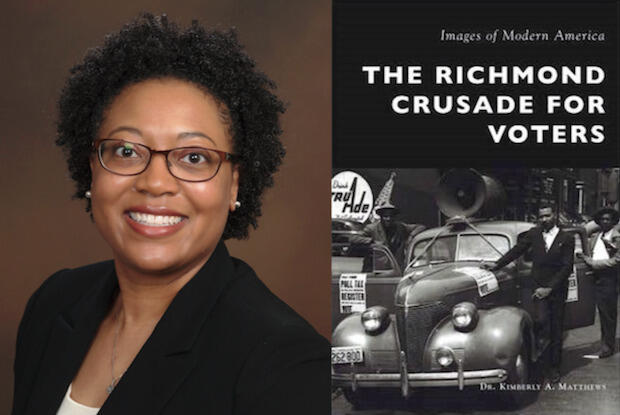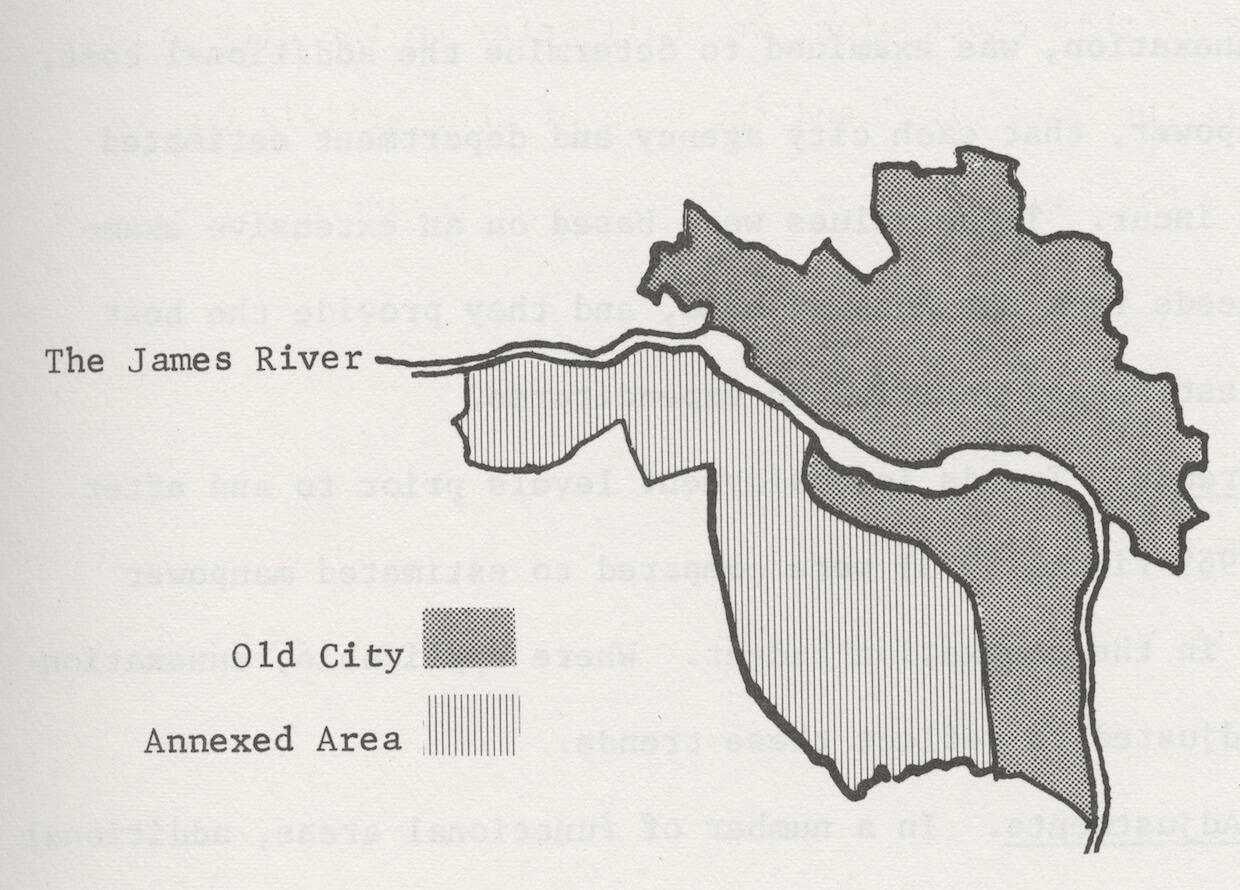Feb. 8, 2018
An interview with Kimberly Matthews about the past and present of the Richmond Crusade for Voters
Share this story

Kimberly Matthews, Ph.D., serves as a professor in VCU LEAD, a living-learning program at Virginia Commonwealth University for undergraduate students interested in leading professional and civic organizations. She is also active in the Richmond Crusade for Voters, a voter education and registration organization founded in 1956 in response to efforts to suppress minority voter turnout. During a stint as editor-in-chief of the organization’s newsletter, Matthews loved to delve into the group’s history and shine a light on overlooked figures who had fought for voting rights.
In November 2015, the Richmond Crusade for Voters held a celebration honoring the 90 for 90 campaign, an effort to register 90 new voters in each Virginia precinct with the goal of a quarter-million new voters. The campaign was created in honor of the 90th birthday of William Ferguson Reid, M.D., one of the co-founders of the Richmond Crusade for Voters. Matthews created a souvenir booklet for the event and grew inspired to illuminate the organization’s history with an in-depth book that would “engage and educate a new generation to the sacrifices of our ancestors and encourage a continued quest for empowerment and equality for all.”
Matthews’ resulting work, “The Richmond Crusade for Voters,” is part of Arcadia Publishing’s Images of Modern America series. The book provides a pictorial history of the organization using both vintage and contemporary images. Matthews, who has master’s and doctoral degrees from the VCU School of Education, shared with VCU News some of what she learned about the organization and its history.
Can you tell us about the origins of the Richmond Crusade for Voters? What inspired its founding and how effective was it in its infancy?

Courtesy of Special Collections and Archives, James Branch Cabell Library, VCU Libraries.
In 1946, the U.S. Supreme Court started ruling against segregation and the previous “separate but equal” dictums. Segregated interstate busing was ruled unconstitutional and some graduate schools were ordered to integrate. As a result of the historic Brown v. Board of Education of Topeka, Kansas, Supreme Court decision in 1954, African-Americans began to fight for better education for their children in their local school districts. However, segregationists like Harry F. Byrd Sr., the principal architect of Massive Resistance in Virginia, wanted to block desegregation. Despite the efforts of the Richmond Committee to Save Public Schools, a local interracial group committed to integration, Virginia passed the Stanley Plan in 1956, which allowed localities to close public schools rather than integrate. After the disbandment of the committee, the Richmond Crusade for Voters emerged in 1956 to register and educate African-Americans in Richmond. The three co-founders of the organization, Dr. William S. Thornton, Dr. William Ferguson Reid and John Mitchell Brooks, helped the Richmond Crusade for Voters become an instrumental force affecting political and social change in Richmond.
Who were some of the key figures in the organization’s early days?

Courtesy of Special Collections and Archives, James Branch Cabell Library, VCU Libraries.
Native Richmonder Dr. William S. Thornton (1920-1999) graduated from Armstrong High School, Virginia Union University and the Ohio College of Podiatric Medicine. Dr. Thornton was a prominent African-American podiatrist and co-founder of the Richmond Crusade for Voters. Dr. Thornton served as the first president of the Richmond Crusade for Voters from 1956-1961. He was heavily involved in spreading the Richmond Crusade for Voters’ model and message across the commonwealth. Dr. Thornton is affectionately referred to as the “Godfather” of the African-American political movement in Richmond.
Native Richmonder Dr. William Ferguson Reid was born on March 18, 1925. He graduated from Armstrong High School, Virginia Union University and Howard University. Dr. Reid was a prominent African-American physician. He co-founded the Richmond Crusade for Voters in 1956 with the mission to register and educate African-American voters during Massive Resistance. In 1968, Dr. Reid became the first African-American elected to the Virginia General Assembly since Reconstruction … He served from 1968 to 1973.
Civil rights activist and keen political strategist John Mitchell Brooks (1917-1980) of Pennsylvania moved to Richmond in 1931. He became one of the first African-American Eagle Scouts in the state and graduated from Virginia Union University and West Virginia State College. Mr. Brooks was a co-founder of the Richmond Crusade for Voters and from 1958-1975 served as the director of the NAACP national voter registration and education program. Mr. Brooks had a unique ability to organize and motivate people to take action in a cause for justice and fair play.
Why has the organization endured? What kind of influence has it had over its lifetime?
The organization has endured because it is a grassroots organization and it is returning to its roots by reaching out to all in the community to tackle issues relevant to Richmond, such as school improvement. In addition, the purpose and mission of the organization is voter education and voter registration, which continues to be a prevalent topic today as it was back in 1956. An example of the Richmond Crusade for Voters’ influence on Richmond was in 1977 with the election of the first majority African-American City Council and the first African-American mayor, Henry L. Marsh III. In addition, the Richmond Crusade for Voters has received praise for its commitment to the city of Richmond, most notably a commendation from the Virginia General Assembly in 2008 with House Joint Resolution No. 229.
My most prized photos were family photos, because I was able to interview many of the family members about their loved ones who participated in the struggle for equality.
Why do you think this was a good story to tell through images? Can you describe the process of locating and selecting the images that are featured in the book?
I love history and I am a visual learner. I believe it is more impactful to see the people and places than to just read about them. People seem to remember more of what they see than what they read. With acquiring photos and just general assistance with my book, I consulted Ray Bonis with VCU Libraries and Dr. Raymond Hylton, professor at Virginia Union University, both whom had written similar books about the histories of VCU and VUU. After conducting research and interviews, I began my hunt for vintage and contemporary photos and found them at museums; local, state and college libraries; and newspapers. My most prized photos were family photos, because I was able to interview many of the family members about their loved ones who participated in the struggle for equality. I selected photos based on the historic value and impact. I want my readers to see that anyone can be empowered to make great historic and positive change.
Did you learn anything that particularly surprised you about the organization and its history while you were working on this book?
What surprised me the most were the lengths people went to in order to preserve segregation and power. In the 1950s and 1960s, this was demonstrated in the form of unjust legislation and voter intimidation with poll taxes and literacy tests. In the 1970s, this was manifested with the annexation of parts of Chesterfield County that added 40,000 white voters to the city of Richmond with the purpose to dilute the African-American vote.

Courtesy of Special Collections and Archives, James Branch Cabell Library, VCU Libraries.
What does the organization look like today and how important a role does it still play in the region? What are its major points of emphasis in today's climate?
In 2016, the organization celebrated its 60th anniversary and it continues to fight for political empowerment through voter registration and voter education. The organization has vowed to return to the basics through grassroots efforts in all Richmond neighborhoods and to become more inclusive, by inviting those from diverse backgrounds, races and political affiliations to join and share their ideas for the advancement of the city, with a focus on the issues.
Subscribe for free to the VCU News email newsletter at http://newsletter.news.vcu.edu/ and receive a selection of stories, videos, photos, news clips and event listings in your inbox every Monday and Thursday during the academic year.
Subscribe to VCU News
Subscribe to VCU News at newsletter.vcu.edu and receive a selection of stories, videos, photos, news clips and event listings in your inbox.




